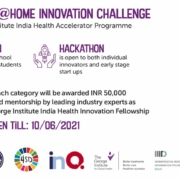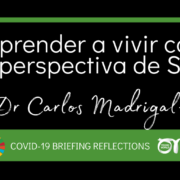COVID-19 is no longer a public health emergency of international concern
COVID-19 Narrative by Dr David Nabarro.
—
On Friday 5 May, 2023, the World Health Organization (WHO) downgraded its assessment of the pandemic, indicating that it no longer qualifies as a global public health emergency. The WHO approach was spelt out by the Director General during his opening remarks at a media briefing which can be watched here.
The background
On January 30, 2020, WHO’s Emergency Committee, constituted to advise the Director General as per the International Health Regulations (an intergovernmental treaty), had recommended that a public health emergency (PHE) be declared. This was before the disease had been named COVID-19 and when there were only 100 reported cases (and no deaths) beyond China.
The declaration that a health threat as a global emergency is a warning by WHO that the threat is extraordinary, affects multiple countries and requires a coordinated containment response. It is designed to encourage national decision makers to introduce special containment measures and arrange the release of extra funds. It indicates that low-income countries will need financial help to participate in the global response.
The present situation
On Thursday May 4, 2023, the Emergency Committee met for the 15th time to discuss COVID-19 and concluded that it was time for a change and made its recommendation to the Director General.
The Director-General said on 5 May 2023, the pandemic has been “on a downward trend for more than a year, with population immunity increasing from vaccination and infection.” That, he said, has allowed most countries “to return to life as we knew it before COVID-19”.
The present situation is that COVID-19 is still a pandemic: the virus is here to stay and that thousands of people continue to die every week. Nearly 3 million people were reported with COVID-19 in April 2023: there were 17,000 COVID-19-related deaths recorded. There is a residual risk of new variants emerging that could cause surges in illness and deaths.
High immunization levels, both from vaccination and previous infection, have helped dramatically reduce the severity of disease. So, while COVID-19 will continue to spread among people for a very long time, the threat level is lower and does not justify extraordinary measures to curb the virus’ spread. COVID-19 needs to be managed alongside other infectious disease threats.
What is WHO doing next?
- WHO is setting up a review mechanism: Now that the Public Health Emergency has ended, WHO is establishing a COVID-19 review committee under the auspices of the International Health Regulations (the current global treaty within the context of which WHO does its infections control work) to develop long-term recommendations for countries on how to manage COVID-19 on an ongoing basis.
- Advising Governments: WHO is advising Governments on actions to be taken now to deal with risks that could result from COVID-19 in the months and years ahead. Last week WHO published the fourth edition of the Global Strategic Preparedness and Response Plan for COVID-19, which outlines critical actions for national authorities. It highlights the importance of maintaining regular assessments of the spread of the virus (including for new variants), protecting people who are vulnerable with vaccines and boosters, the use of non-pharmaceutical measures (distancing, masking and protection) for reducing the likelihood of exposure among those who are more likely to experience severe disease (people who are older, immune-compromised, or affected by diseases that increase risk such as diabetes). It also emphasises the need to ensure that health workers and carers are able to reduce their exposure too. It includes recommendations on how to maintain safe health care, with the capacity to scale up if necessary, if there is a surge in people affected by the virus and experiencing severe illness.
- New Pandemic Treaty: WHO is also hosting negotiations between its Member Nations on the development of a new pandemic preparedness treaty to learn lessons from COVID19 and handle future mega-threats more effectively.
People are partners in the response
Simon Clark, Professor of Microbiology at the University of Reading, is quoted as saying that the message to the public should still be to take care and think of others. That means if you’re ill with a respiratory infection, like a bad cough, don’t put others at risk, especially not those who are vulnerable. If you pass on a COVID-19 infection, no one will thank you. Even if you are fit and young, COVID-19 can still be nasty and if you’re old and frail, it can kill you.
Mike Ryan, Director of the WHO Health Emergencies Programme, is quoted as saying, “It took decades… for the pandemic virus of 1918 to disappear,” when referring to the Spanish flu pandemic which is thought to have killed at least 40 million people.
So there is still much more work to be done even though the Public Health Emergency is over!








Leave a Reply
Want to join the discussion?Feel free to contribute!